Samsung Galaxy S 2 (International) Review - The Best, Redefined
by Brian Klug & Anand Lal Shimpi on September 11, 2011 11:06 AM EST- Posted in
- Smartphones
- Samsung
- Galaxy S II
- Exynos
- Mobile
Software
Before we go much further, I think it’s important to go over all of the software running on the international version of the SGS2 we’ve been loaned. I’ve made explicit mention of the fact that we were loaned this device because as a result it makes testing things with custom and leaked ROMs somewhat interesting. For the most part, carriers and OEMs don’t care as long as everything makes it back to them in exactly the same state they were shipped out, but it’s always a grey area. For that reason, I’ve been testing and using the device exclusively with the latest ROM for the phone as shown in Samsung Kies. As of this writing, that’s still Android 2.3.3 and firmware XWKF3. I realize there’s a leaked ROM which is 2.3.4, however we’ve opted to just go with official at this point.
The original SGS1 started Samsung’s trend of adding UI skins to high-end devices, and drew a firestorm of criticism from critics all over. Thankfully it seems as though Samsung has heard those complaints and has lightened things up considerably this go-around with TouchWiz 4.0 which runs on the SGS2. Where TouchWiz 3.0 (from SGS1) looked like a strange attempt at making Android 2.1 and 2.2 look like iOS, TouchWiz 4.0 is a much cleaner, less claustrophobic, and considerably less garish experience.
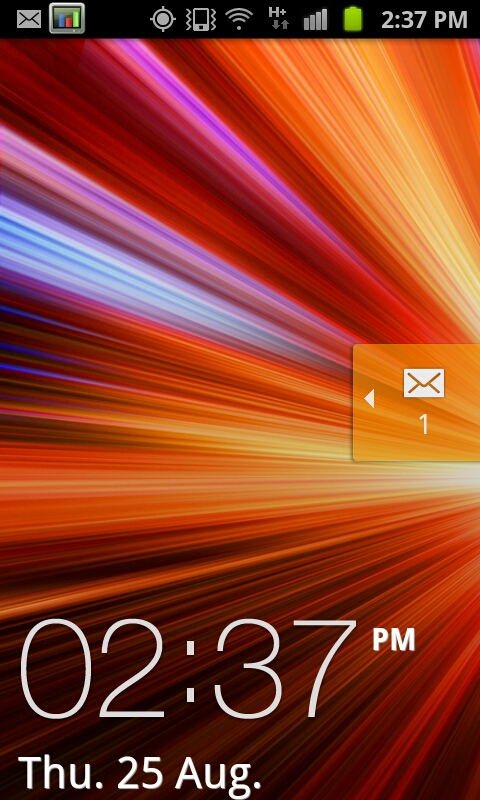
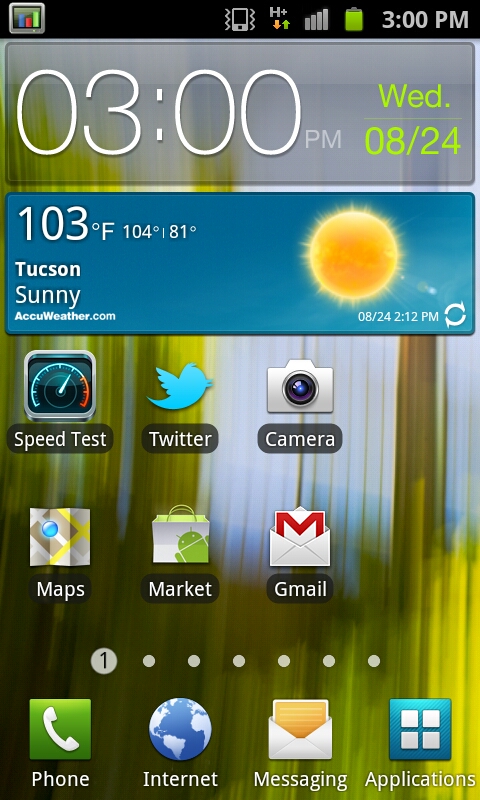
Starting with the lock screen, TouchWiz 4.0 continues the tradition of changing things here. Unlocking is achieved by moving the large graphic and clock off the screen, unless of course you’ve defined a custom lock pattern or PIN. Alerts such as new SMSes can be handled by sliding the notification ribbon across the screen. Of course this background is customizable and discrete from the main background as well. There’s really not much to say about this beyond that I’m still surprised TouchWiz didn’t take a nod from HTC’s Sense 3.0 and add shortcut functionality into this menu.


The main application launcher and home screens are what make or break a skin, and here I think there’s more positive than negative with TouchWiz 4.0. To start, home screen one is the far left, not the center. Switching between these is accomplished either by swiping back and forth or dragging on the dots at the bottom. This animation is extremely fluid - I get the impression that the entire TouchWiz 4.0 experience does leverage the GPU for composition and as a result feels very speedy.
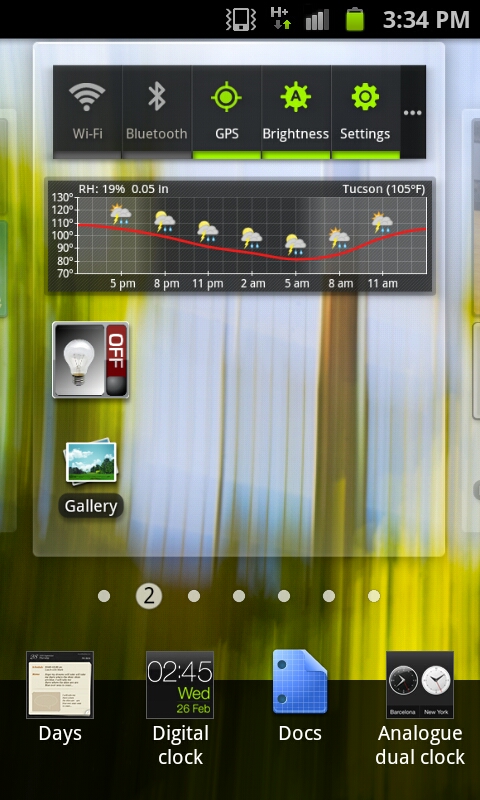
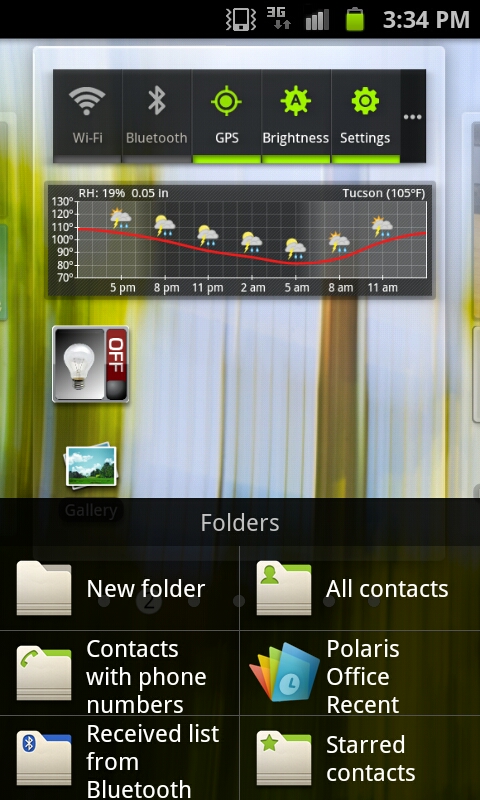
There’s a contextual menu as well where new widgets, shortcuts, and folders can be added. In fact, most of the home screen customization takes a similar - screen on top, menu on bottom - approach, which makes a lot more sense than stock Android’s popup bubble schema. Tapping widgets gives you a long list of available widgets which tilt as you scroll through them. Just like other UI skins, there’s an assortment of skin-specific widgets that support resizing.
For the most part, I find that TouchWiz 4.0 moves away from the social-hub augmented with weird widgets motif set by the last generation of UI skins. That’s definitely a good thing, because most of the time that last generation failed to really deliver social experiences that came close to true first-party experiences.
TouchWiz 4.0 does still keep the bottom row of applications which is another throwback to iOS, and like other skins puts the application launcher shortcut in the far right.
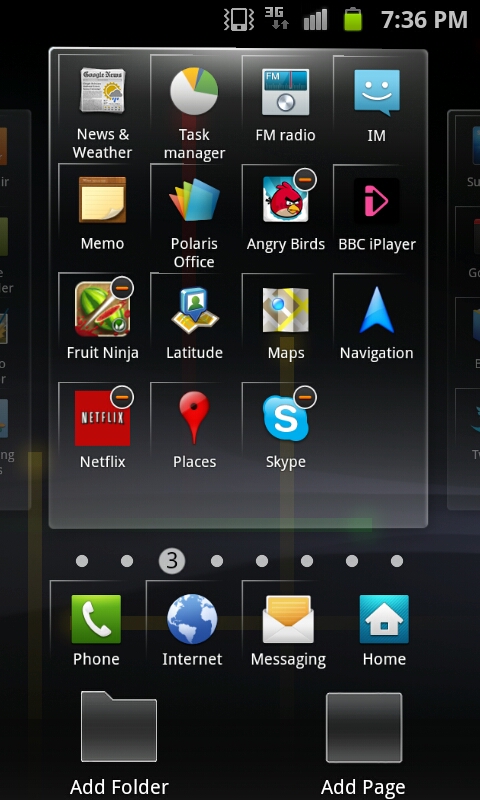

By default the applications launcher presents icons in a 4x4 paginated layout, though you can toggle a list view as well and just scroll up and down. Menu edit brings you to a view just like the home screen customization page, where you can move icons around and also change the bottom row of shortcuts. There’s also folder support for organization. One major plus is that icons no longer have the chicklet-like background colors that made everything square and applications difficult to identify quickly. Thankfully, that’s gone, and the result feels far less tacky than the previous iteration.
Just like the home screen, you can change between pages of applications by tapping on the page number dot, or scroll back and forth quickly by sliding along the bar. This results in the same animated sliding view that the homescreen shows. I guess that’s one positive thing this go-around with TouchWiz, if anything you can’t criticize it for being inconsistent. For the most part honestly the launcher and homescreen TouchWiz components are pretty tolerable.
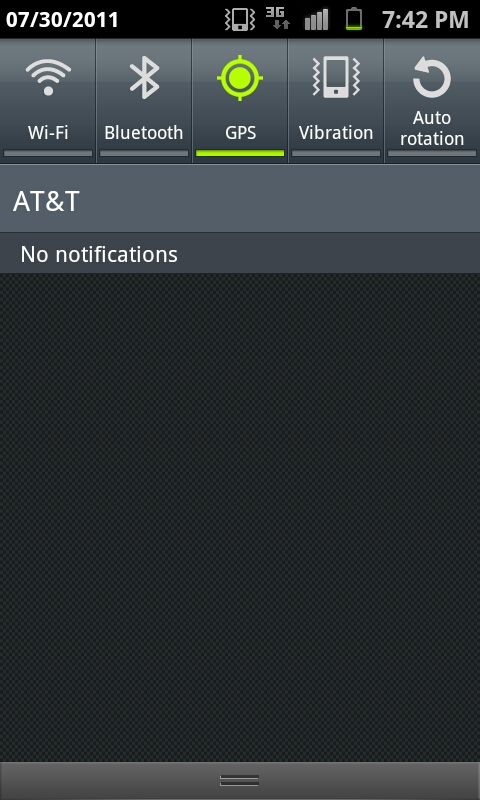
Just like in the past, the notifications shade drop down includes toggles for WiFi, Bluetooth, GPS, Sound, and Auto Rotate. It all works just like you’d expect it to. One small thing here is that if you’re in manual brightness mode, press and holding on the notifications bar and dragging left or right will change brightness along the scale. It’s a quick way to get analog control over brightness if you’re in manual setting mode.


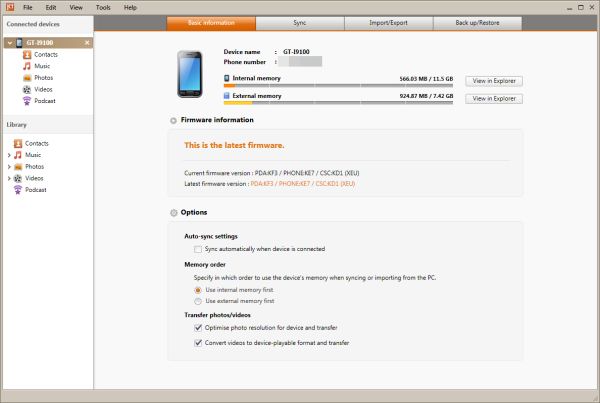








132 Comments
View All Comments
dagamer34 - Sunday, September 11, 2011 - link
On pg 15, Galaxy S uses a SGX 540 GPU, not 530. Other than that, great review!Synaesthesia - Sunday, September 11, 2011 - link
Staggering review, you really are the most comprehensive and scientific reviewer around, bravo!Samsung have really impressed with this phone, in terms of how much effort they have invested in the hardware and software. One thing still stands out for me, the battery life. While good, it still doesn't hold a candle to the iPhone 4, as shown on the charts.
LostViking - Saturday, September 17, 2011 - link
What do you mean?Its about 30% worse when web browsing (mostly because of the much larger screen I reckon), but better in the other tests.
If you are one of those old timers who actually use the phone for talking the SGSII is about 30 better ;)
When I am low on battery, and don't have access to a charger, that's usually what I would prioritize.
xdrol - Sunday, September 11, 2011 - link
For me the mentioned Cat 5 limit looks reasonable - you don't get user-level 2.0 Mbps because of the overhead of the PDCP/RLC/MACd protocols (about 15% -> 2.0 Mbps is 1.7 Mbps for IP).wilky76 - Sunday, September 11, 2011 - link
Alot of people that have the Samsung Galaxy S2 are suffering from framerate problems when using either 720p or 1080p in low light including myself.What basically happens is when the camera tries to focus in lowlight the framerates drop to around 13fps, then jump back upto around 30fps again, basically making any HD video recording useless in low light because of the stuttering, the only fix that is known is to drop the exposure to -2 as this stop the stuttering, or use 480p when indoors or poor light.
Some folks have returned their SGS2 because of this problem, only to receive another with the same problem.
There has been a couple of camera firmware updates on Samung own app site, which to this date still hasn't sorted the problem out & in some cases people that weren't suffering from this problem, now have it after updating the camera firmware.
Can any of you guys at Anandtech test your SGS2 in low light with either 720p or 1080p to see if the mobile you received for reviewing also suffer from this problem.
But what is strange is that not everbody has the framerate problem, so it could be due to which sensor you get with your SGS2, and could proberly be sorted with a firmware update eventually.
Anyways people with this problem and there is a few can be found in this post over at XDA
http://forum.xda-developers.com/showthread.php?t=1...
DrSlump - Monday, September 12, 2011 - link
Hi, i have exactly the same problem with my samsung galaxy s2.I got casual stuttering (a frame loss) during normal light conditions and severe stuttering under low light conditions.
As soon as the firmware raises the sensor gain to match the detected light, the framerate goes down to 25fps and when autofocus occours the framerate goes down to 13fps, and then returns back to 25fps when the autofocus is finished.
I olso noticed that when i try to frame a tv or a monitor, severe banding occours. Even taking a video when the light source is a tv or a monitor, banding occours. Seems like the isp isn't able to compensate the frequency of the light source.
In a lot of situations it's impossible to take a video due to the severe stuttering :(
Any one of you has these problems? How to solve it?
I would like to ask to the autor:
did you notice some problem with the display? There is a thread in the xda-developers forum that speaks about the yellow tinting or faded out left side of the screen. Please can you report about this problem?
B3an - Sunday, September 11, 2011 - link
Why dont you just admit it's the best phone around hands down? :) Not just the best Android phone. It's clearly miles superior to the outdated iPhone 4.Shame you yanks have had to wait forever to get it, only to get 3 different versions that dont even look as good and have ridiculous names. I've been using a GSII since April and it's just unmatched.
ph00ny - Sunday, September 11, 2011 - link
This yank got it on the UK launch day and i've been enjoying it sincesteven75 - Sunday, September 11, 2011 - link
It's not better in battery life, audio quality, display resolution and sharpness, or the many ways that iOS is better (AirPlay, app selection AND quality), immediate OS updates, etc).Gread Android phone though for those interested in 4.3" displays, which definitely isn't everyone. Personally, I'd wait for the Prime.
steven75 - Sunday, September 11, 2011 - link
Oh and outdoor display brightness, which even at 100% isn't a match for iPhone, but then it's even capped at 75% for temp reasons.